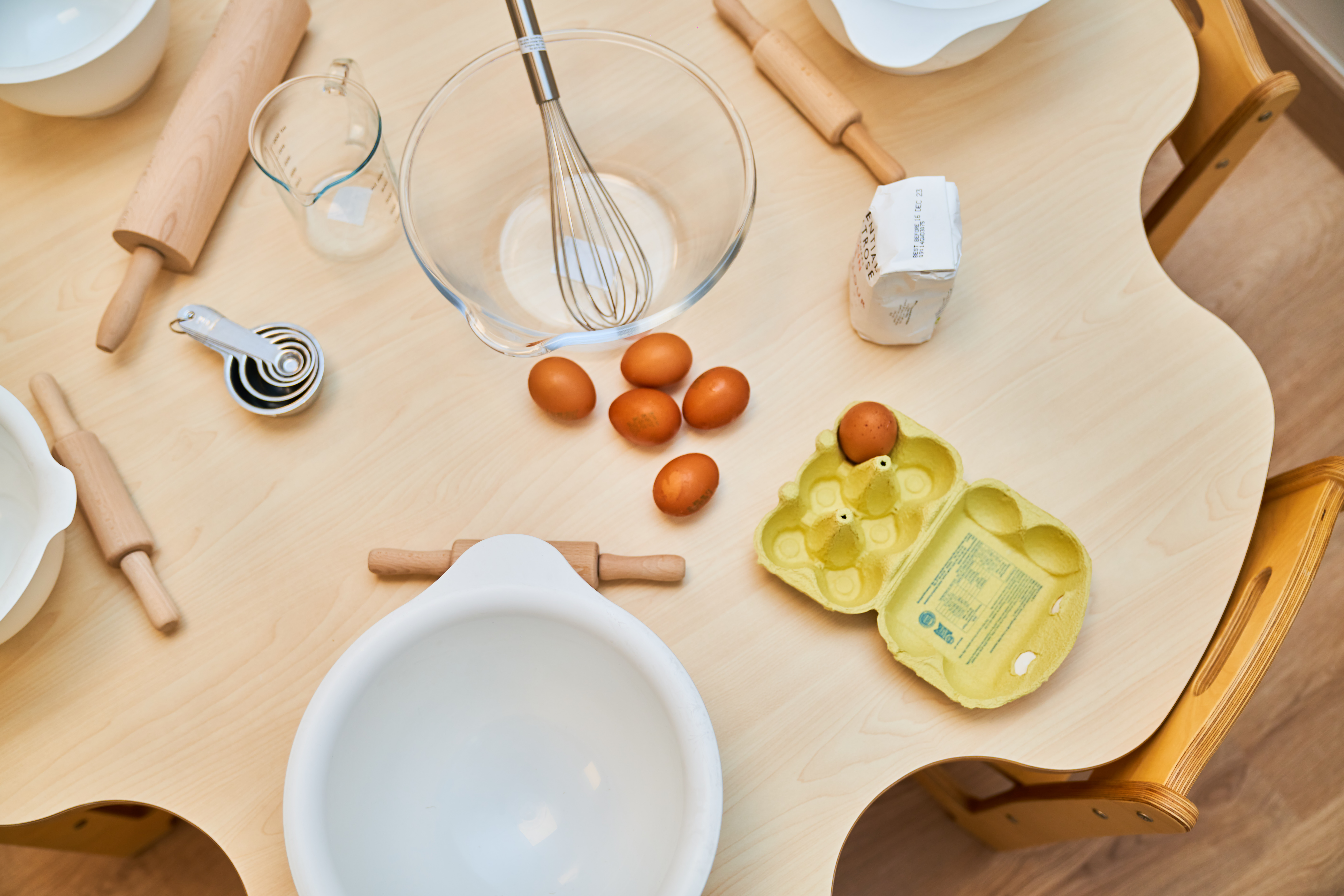
It’s easy to give your child a toy to keep them occupied while you go on with your daily routine, we call this “busy work”. However, children need purposeful and meaningful work that allows them to refine their motor skills, enrich their language, explore through their senses, and bring them a sense of accomplishment. Therefore, the first step is to declutter all the toys that populate the home setting and do not serve their development.
Meaningful work has an intelligible goal. We call the daily tasks at home Practical Life exercises because they promote a developmental need; the need to become independent, caring for themselves and their environment. Children take pride in dressing themselves, cleaning up after them, preparing a snack—these activities enhance their coordination and develop their concentration. If the activities of real life can be practised in the classroom environment, surely, they can be carried out at home. There are many ways your child can take part in your happenings at home. Before including them, take these four points into consideration:
1. Make it developmentally appropriate!
The activity should be something your child can nearly do, not too difficult and not too easy so that the challenge is sufficient to captivate the child and attract him/her wholly.
2. Make it accessible!
If you want your child to be independent, you must provide the means. For example, if you want to show them how to brush their teeth in the morning then you will have to adjust the bathroom so that it is easy to access the things they need. Prepare a low shelf where child-sized toothpaste and toothbrush are accessible to your child. Designate an area where all the items your child needs are kept in open containers so that they can find them when they need them and return them back when they are finished.
3. Show don’t tell
Model and let them practise, for example if you are introducing a new routine like toothbrushing you need to model every step, show how to open, and close the toothpaste and then let them try.
It’s not enough to show, you must invite your child to do each step. It’s important not to talk when modelling because the impression of what you are doing is more powerful than what you are saying.
Observe before diving into help to encourage independence and overcome the challenge alone. This way you begin to nurture their confidence in their own abilities. Children need lots of practise when learning something new. It takes time to gain control of your limbs and carry out an action with precision. Give them the freedom to make mistakes, through repetition and their own efforts, they will perfect and master their movements. Let them explore the parameters of the possible. Judging their performance can lead to insecurity and consequently, the child begins to cry ‘I can’t’. It is difficult for the adult to see a child struggling and resist the temptation to help, but it is the child’s own work which is key. Imagine the child’s joy once he/she completes the action and shouts ‘I did it!’ Therefore, not only is a new skill acquired, but their self-esteem which supports the child’s ability to persevere in the face of difficulty.
Use reminders of what you practised to prompt your child, ‘what do we do when we finished eating?’ instead of asking them to wash their hands for example.

3. Set clear boundaries to maintain order
The clearer you are in communicating your expectations the more successful your experience with your child at home will be. Show them how to carry out a new activity, how to put it back in its place when they are finished and where they should work with it. You should have a designated workspace, a child-sized table or small mat is ideal, the purpose of is to highlight to your child that their activity must stay within this space.
Tips for implementing!
- Plan and make sure all the things needed to complete the activity are ready for use
- Show your child how to work with the activity
- Observe your child
- Reflect on your observations, what did your child struggle with? What aspect of the activity was repeated? Did they put it away and were not interested?
Practical Life activities for 3–6-year-olds at home:
- Dusting a table
- Preparing a snack
- Setting the table
- Pouring a drink
- Folding cloths
- Flower arranging
- Cleaning plants

